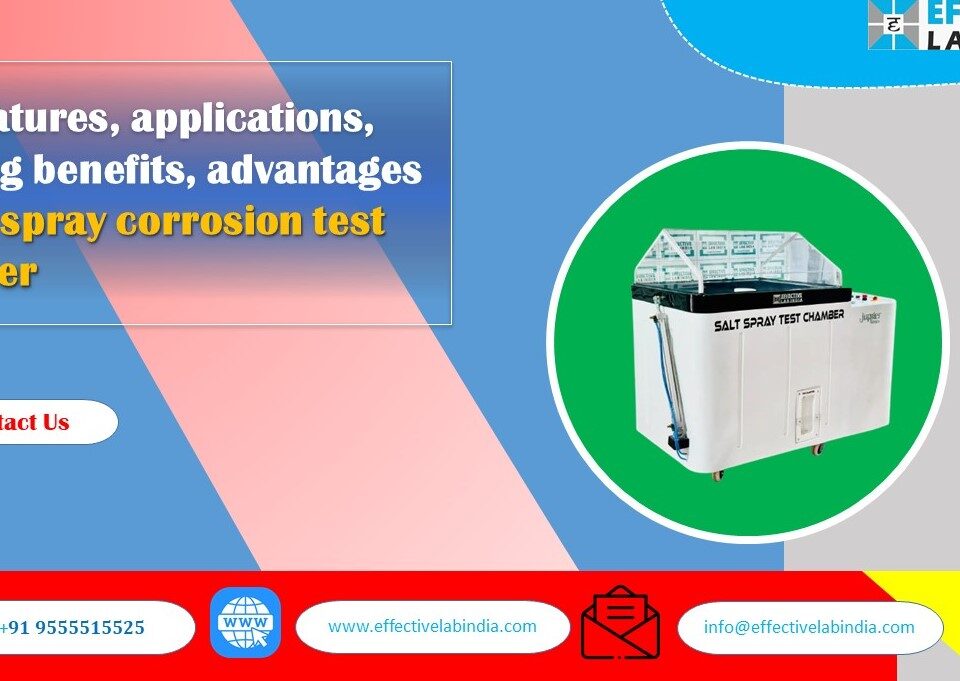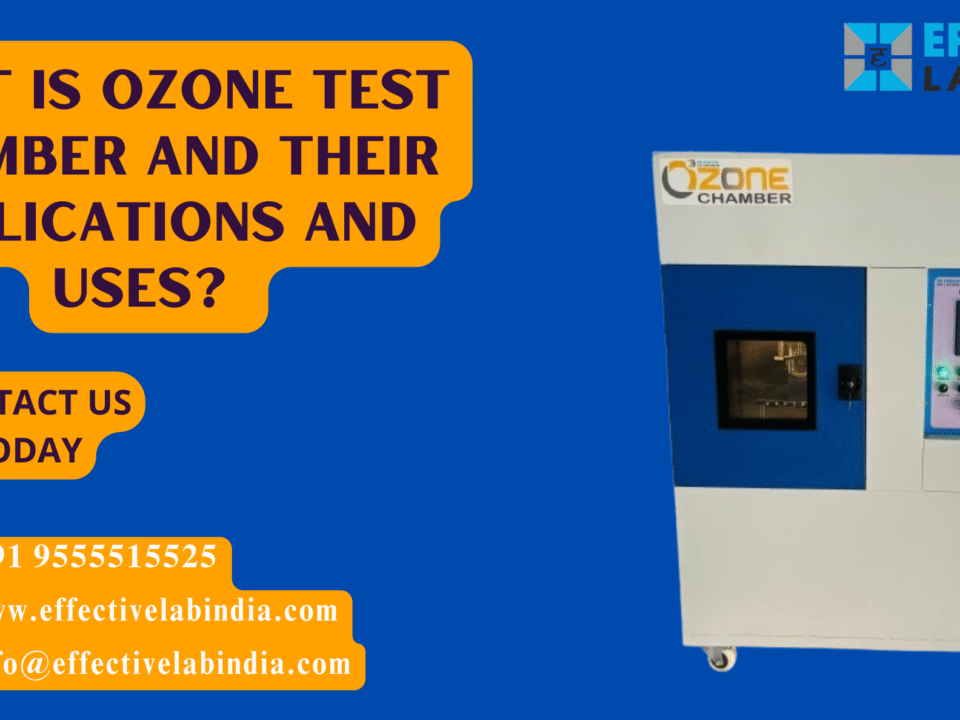
Effective Lab India Ozone Test Chamber Review Features, Price & Performance
February 22, 2025
How to Conduct a Salt Spray Test and Salt Spray Test Procedure
February 28, 2025In industries where product packaging plays an important role in quality assurance, the vacuum leak test is an essential process. Vacuum leak testers are a widely used instrument that is designed to detect leaks in packaging by making a vacuum and by looking at any change. It ensures the integrity of packaging in industries such as food, drugs and industrial applications.
But how does it work? Is this so necessary? Dive into the details!
What is a Vacuum Leak Tester?
A vacuum leak tester is an accurate testing instrument used to check leaks in sealed packaging. It works by making a vacuum inside a chamber and monitoring if the package maintains the seal. If any leakage, air or liquid package is stored, it will be easier to detect errors.

Industries that Use a Vacuum Leak Tester
This device is widely used in:
- Food and Beverage Industry – Ensure airtight packaging to prevent contamination.
- Pharmaceutical Industry – To check the integrity of blister packages and medicine packaging.
- Cosmetic and Chemical Industry – Testing the sealing of bottles and tubes.
- Automobile and Electronics – Ensure product safety by checking protective packaging.
How Does a Vacuum Leak Tester Work?
Basic Principle
When the test sample is placed in a sealed container of the instrument, a vacuum is created, which is how a vacuum leak tester operates. Air or liquid will escape from the package if there is any leakage, which would indicate a failed seal.
Step-by-Step Working Process
- Example location: The package is located inside the vacuum chamber.
- Vacuum generation: The machine forms a vacuum inside the chamber.
- Leaked identity: If there is a leak, the bubbles will appear in a submerged package, or the package may be unexpectedly inflated or impure.
How to Use a Vacuum Leak Tester?
Preparation
- Make sure the machine is located on a stable surface.
- Set the vacuum chamber with the necessary parameters.
- Calibrates the device if necessary.
Testing Process
- Keep the sample in the vacuum chamber.
- Close the chamber lid safely.
- Start the vacuum process and inspect for leaked indications.
Result Interpretation
- If bubbles appear (for submerged samples), there is a leak.
- If the package is deflating under a vacuum, it indicates the failure of the seal.
Key Features of a Vacuum Leakage Tester
- High-precision Vakuum chamber for accurate testing.
- Adjustable vacuum pressure for testing different package types.
- HMI touch screen and user-friendly control.
- Automatic identification system for reliable results.
- Sturdy Construction: Constructed using premium materials to endure demanding testing conditions and provide long-term endurance.
- Respect for International Standards: complies with ISO 9001 and ASTM D4991, ASTM D3078 standards, providing testing accuracy and dependability that are accepted worldwide.
- To preserve the dependability of test findings, built-in calibration makes calibration simple and precise.
- A sophisticated vacuum system that can produce and sustain steady vacuum levels for precise leak detection.
- A digital pressure sensor guarantees accurate and very sensitive vacuum level measurement.
- Adjustable Test Parameters: Enables the establishment of precise test times and vacuum pressures to satisfy different testing requirements.
- Data logging and storage: Enables registration and storage of test results for future analysis and quality control.
Specifications of a Vacuum Leakage Tester
Technical Specifications
- Chamber Size: Varies based on model
- Vacuum Range: Typically 0 to -900 Mbar
- Power Supply: 220V AC or customizable
- Display: HMI Touch Screen
- Least Count: 1.0 mm Hg
- Rotation: 15 revolutions/mints
- Accuracy: 0.5% of the measure
- Power: 220 V, Single Phase, 50 Hz
- Controls: Pressure Monitoring and Timer Integrated in HMI
- Timer: p to 999 Seconds
- Material: Mild Steel duly powder-coated
Materials Compatibility
- Flexible packaging (pouches, sachets)
- Hard containers (bottles, jars)
- Blister pack and pharmaceutical strips
Applications of a Vacuum Leak Tester
This instrument plays a vital role in industries such as:
✅ Food and drink – to ensure freshness and hygiene.
✅ Pharmaceuticals – Prevention of contamination in medical packaging.
✅ Industrial packaging – Checking protective material integrity.
Best Vacuum Leak Tester Manufacturer – Effective Lab India
If you are looking for a reliable vacuum leak testing machine, Effective Lab India is a top option. They are known for their high-quality test units that produce accurate and accurate results.
Why Choose Effective Lab India?
✅ Material painting of high quality and long-lasting sensor.
✅ Advanced technology – digital, HMI and automatic control options.
✅ Reasonable price-cost solution for all industries.
✅ Adaptation available – machines that suit your specific needs.
Conclusion
Vacuum leak test machine is an important means of quality assurance in many industries. This ensures the reliability and durability of product packaging by detecting leaks and preventing pollution. Effective Lab India offers top vacuum leak testers for packaging leakage testers, making them an ideal alternative for companies that want to improve the quality of their packaging.
FAQs
1. What types of packaging can be tested using a Vacuum Leakage Tester?
It can test pouches, bottles, blister packs, and flexible packaging used in food, pharma, and industrial applications.
2. How accurate is a Vacuum Leaker Tester?
Most testers provide precise results with accuracy levels of ±0.5%.
3. Can it be used for liquid packaging?
Yes, a Vacuum Leak Tester is effective for testing liquid-filled pouches and bottles.
4. What is the standard vacuum range for leak testing?
Most machines operate within a vacuum range of 0 to -900 mbar.
5. How often should a Vacuum Leak Tester be calibrated?
It is recommended to calibrate it every 6-12 months for accurate results.




